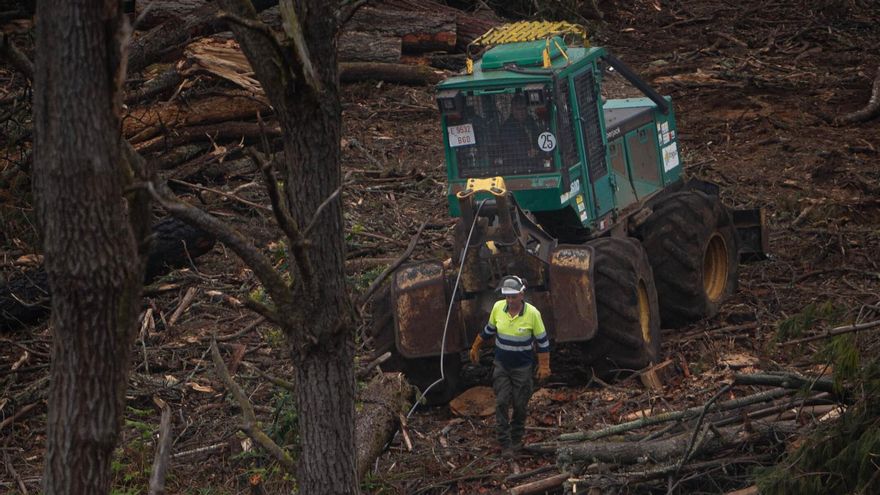
Tenerife’s Laurisilva Recovery Efforts
Tenerife is revitalising its laurisilva as a strategy against forest fires in the midlands. The Natural Environment Department of the Cabildo has commissioned the public company Gesplan to undertake a project aimed at replacing the imported radiata pine with native monteverde species such as faya, brezo, and codeso, which are more fire-resistant due to their moisture content and soil adaptation.
This initiative will create green corridors between tree masses in areas affected by the significant wildfire of summer 2023. The first phase, which includes project direction, has a budget of €580,000 and a duration of 27 months. The measures encompass comprehensive forestry work on pine forests, technical tasks for controlling forest products, and complementary restoration work in areas currently occupied by non-native species.
Rehabilitation
Councillor Blanca Pérez noted that “since the fire two years ago, we have made progress in rehabilitating the affected areas by restoring vegetation, protecting the soil, and reconstructing infrastructure.” However, she pointed out, “there remains extensive and technically complex work ahead.” This includes silvicultural treatments in reforestation areas and the sustainable protection and management of forests along forest tracks and slopes.
Complex Removal
Pérez emphasised that “we must address the removal of radiata pine in the most challenging areas due to steep slopes, as well as access and residue extraction complications, which necessitates careful scheduling of the work.”
Replacement
The councillor explained that “the objective is to replace the highly flammable radiata pine with monteverde species, which are more fire-resistant.” Achieving this goal requires a series of forestry support or complementary tasks alongside the comprehensive silvicultural treatments for radiata masses and their subsequent restoration with monteverde. This is why the commission has been entrusted to Gesplan.
Three Focus Areas
The work will focus on three key areas. First, a joint external direction for the comprehensive forestry of pine forests, including actions in areas with complex operability of radiata pine; protective forestry in the environment of the Protected Landscape of Las Lagunetas; and the overall improvement of repopulated canarian pine masses.
Control
Secondly, specialised technical work for controlling forest products obtained from silvicultural treatments will be developed. The restoration products from the burned area will be made available through in-kind subsidies, local use, and auctions.
Restoration
Lastly, the restoration of monteverde in areas occupied by radiata pine will be carried out. The commission includes technical assistance for drafting the construction project of a forest plant nursery at the Aguamansa Environmental Centre (La Orotava) and overseeing its construction, along with specialised technical work related to infrastructure associated with the hydraulic networks managed by the Technical Service of Forestry Planning and Projects of the Cabildo.
Technical Perspective
Forest engineers Adela Conde—one of the eight fire extinguishing officials from the Cabildo of Tenerife—and Esther Pérez explained on-site in the Landscape Protected Area of Las Lagunetas (El Rosario) how the work conducted over the past decade with island monteverde has helped to combat fire and facilitate extinguishing efforts. These silvicultural treatments across approximately 719 hectares will now continue. Conde emphasised: “Efforts have been made to replace imported species with monteverde species, which retain moisture, are more fire-resistant, and also improve soil quality while preventing erosion.” The laurisilva and fayal-brezal form Tenerife’s monteverde, featuring iconic trees such as laurel, barbusano, and acebiño.
The Imported Species
Radiata pine, also known as californian pine, can reach heights of 25 metres and weigh up to three tonnes, posing a danger to people due to the potential for falling after wildfires like the one in 2023. These large trees have low resistance to fire and adverse weather conditions, occupying sensitive and high-risk areas.
Failed Reforestation
Between 1946 and 1972, there was an intense reforestation of californian pine for production purposes on the island, covering around 2,000 hectares, primarily in monteverde areas. Over the years, these foreign pine forests began to lose strength, creating problems during wildfires due to their high density and impact on public safety. There are approximately 300 hectares of radiata pine in Tenerife. The current objective aims to bring about a cycle change, enabling monteverde to replace the imported species.
















